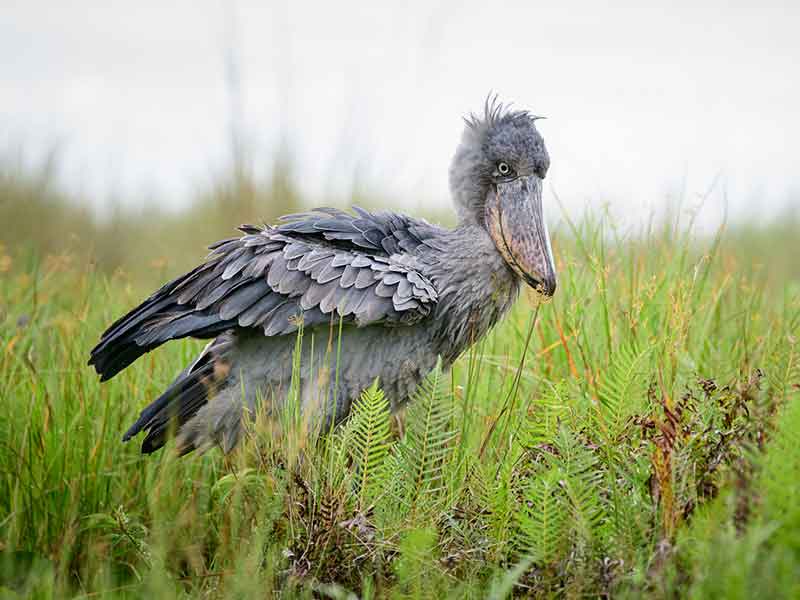1 day Mabamba Swamp Shoebill birding, a day trip to Mabamba Swamp in search for the elusive shoebill stork begins with a pickup from your place of stay in the morning in either Entebbe or Kampala city. Make sure to pack essentials like binoculars, a camera, rain jacket, sunscreen, insect repellent, and bottled mineral drinking water enough for drinking.
Mabamba Wetland Swamp is located on the northern shores of Lake Victoria about 25 km from Entebbe town. Depending on where you’re coming from, the journey could take an hour. Along the way, you pass through picturesque landscapes and rural villages. Upon arrival at the docking site, you meet your local guide who is well-versed in Mabamba swamp’s ecosystem and knows the best spots to find shoebill storks.
You embark on a traditional wooden canoe ride which allows you to navigate through the narrow channels and papyrus reeds of the wetland with minimal disturbance to the wildlife. Guests sit in the canoe with a trained local guide and his companion who stands firm and manually propel it with a pole. The experience is one of the most memorable Uganda safari activities.
There are over 12 shoebills in Mabamba swamp, making for one of the best places to spot the pre-historic looking bird in Uganda. Shoebills feed on lung fish which known as “Emamba” in Luganda, the language of Buganda kingdom. The swamp has abundance of the fish species which sustains the growing number of shoebills.
In addition to the shoebill, Mabamba swamp is famous for harboring over 260 species of birds including Lake Victoria Basin Endemics such as the pallid harrier, papyrus gonolek, blue swallow, and the northern brown throated weaver.
Among other species include African jacana, Caruther’s cisticola, swamp flycatcher, water thick-knee, mourning collared dove, golden backed weaver, pied kingfishers— you might make a bird checklist of up to 100 species around Mabamba. After the shoebill experience, you will be driven back to Entebbe town, which marks the end of 1 day Mabamba swamp shoebill birding.

